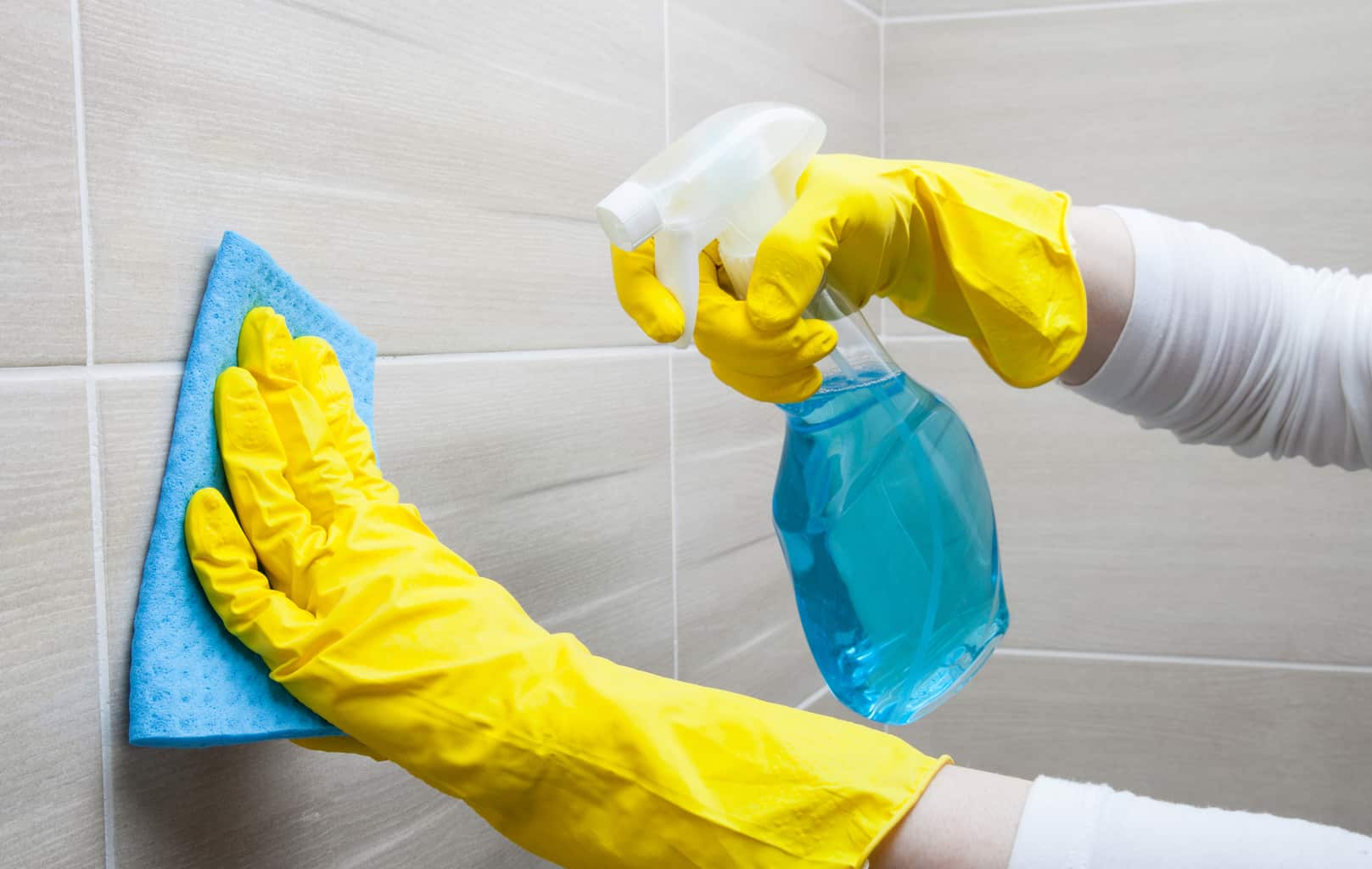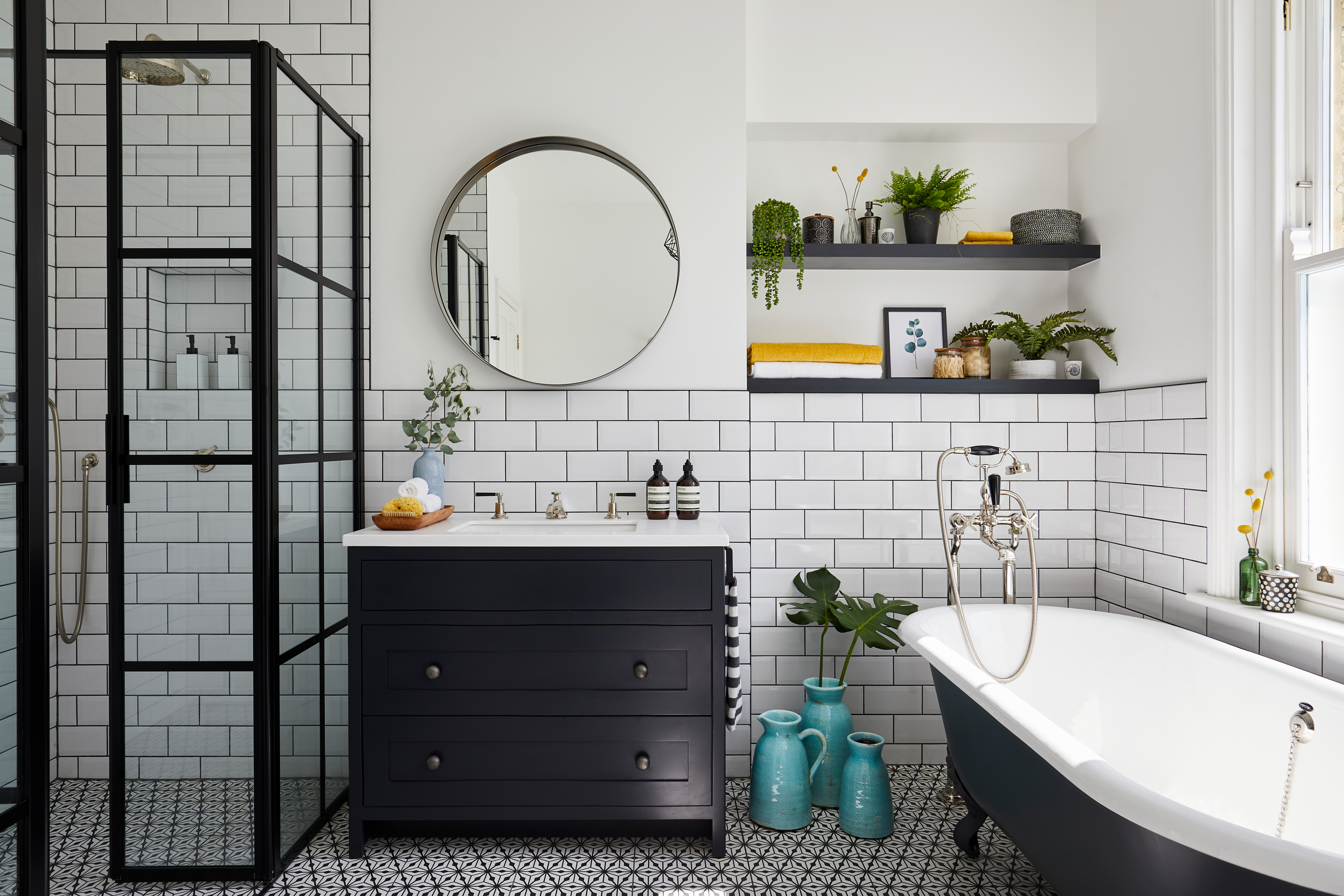Materials and Their Cleaning Properties
Choosing the right bathroom floor material can significantly impact its ease of cleaning and maintenance. Understanding the properties of each material and how they react to cleaning agents is crucial for making the best choice for your bathroom. Let’s delve into the characteristics of common bathroom floor materials and their cleaning considerations.
Tile
Tile is a popular choice for bathroom floors due to its durability, water resistance, and versatility in style. Ceramic and porcelain tiles are particularly popular, offering a wide range of colors, patterns, and textures.
- Cleaning Properties: Tile is relatively easy to clean, as its smooth surface prevents dirt and grime from clinging too tightly. It is generally resistant to most cleaning agents, including acidic cleaners like vinegar.
- Cleaning Techniques: Regular sweeping or vacuuming removes loose dirt and debris. For deeper cleaning, use a mild detergent and warm water, scrubbing with a soft-bristled brush. Grout lines, which can accumulate dirt and mildew, require special attention. A grout cleaner and a toothbrush can be used to remove stubborn stains.
- Maintenance: Tile requires minimal maintenance beyond regular cleaning. Sealing the grout periodically can help prevent staining and make cleaning easier.
- Examples of Cleaning Products: For general cleaning, you can use a multi-surface cleaner or a tile-specific cleaner. For grout cleaning, products like “Tilex Mold & Mildew Remover” or “Zep Grout Cleaner” are effective.
Vinyl
Vinyl flooring is a cost-effective and durable option for bathrooms. It comes in various styles, including sheet vinyl, tile-look vinyl, and luxury vinyl plank (LVP).
- Cleaning Properties: Vinyl is water-resistant and easy to clean. Its smooth surface repels dirt and grime, making it a good choice for high-traffic areas.
- Cleaning Techniques: Regular sweeping or vacuuming is sufficient for daily maintenance. For deeper cleaning, use a mild detergent and warm water. Avoid harsh chemicals or abrasive cleaners, as they can damage the vinyl surface.
- Maintenance: Vinyl flooring generally requires minimal maintenance. Regular cleaning and occasional mopping with a damp mop will keep it looking its best.
- Examples of Cleaning Products: For general cleaning, a multi-surface cleaner or a vinyl-specific cleaner can be used. “Pledge Multi-Surface Cleaner” or “Bona Hardwood Floor Cleaner” are suitable options.
Laminate
Laminate flooring is another budget-friendly option for bathrooms. It mimics the look of hardwood or tile but is more affordable and easier to maintain.
- Cleaning Properties: Laminate is water-resistant and easy to clean. However, it is less durable than tile or vinyl and can be susceptible to scratches and dents.
- Cleaning Techniques: Regular sweeping or vacuuming is recommended. For deeper cleaning, use a damp mop with a mild detergent. Avoid using harsh chemicals or abrasive cleaners.
- Maintenance: Laminate flooring requires minimal maintenance. Regular cleaning and occasional mopping will keep it looking its best. Be careful not to spill water on the seams, as this can cause damage.
- Examples of Cleaning Products: For general cleaning, a multi-surface cleaner or a laminate-specific cleaner can be used. “Bona Hardwood Floor Cleaner” or “Armstrong Laminate Floor Cleaner” are good choices.
Natural Stone
Natural stone, such as marble, granite, and slate, adds elegance and sophistication to bathrooms. However, it requires more care and maintenance than other materials.
- Cleaning Properties: Natural stone is porous and can be susceptible to stains and etching. It is also sensitive to acidic cleaners, which can damage the surface.
- Cleaning Techniques: Regular sweeping or vacuuming is essential for removing loose dirt. For deeper cleaning, use a mild detergent and warm water. Avoid using harsh chemicals or abrasive cleaners. Always test any cleaning product on an inconspicuous area first.
- Maintenance: Natural stone requires regular sealing to prevent stains and etching. You should also clean spills immediately to avoid damage. Avoid using harsh chemicals or abrasive cleaners, as they can damage the surface.
- Examples of Cleaning Products: For general cleaning, use a pH-neutral cleaner specifically designed for natural stone. “StoneTech Stone & Tile Cleaner” or “Miracle Method Stone Cleaner” are suitable options. For sealing, use a penetrating sealer designed for the specific type of stone.
Cleaning Methods and Techniques: Easiest Bathroom Floor To Clean

Now that we’ve discussed the different materials used for bathroom floors and their cleaning properties, let’s dive into the practical aspects of cleaning them effectively. We’ll explore various cleaning methods and techniques, focusing on the most efficient ways to tackle dirt, grime, and stains.
Sweeping and Mopping
Sweeping and mopping are essential for maintaining a clean bathroom floor. They remove loose dirt, debris, and hair, preventing them from accumulating and becoming embedded in the floor.
- Sweeping: Use a broom with soft bristles to sweep the floor gently, avoiding harsh scrubbing that can damage the surface. For tiles, use a dustpan to collect the debris effectively.
- Mopping: Choose a mop that’s appropriate for the floor material. String mops are ideal for most surfaces, while sponge mops are better for delicate materials. Wring out the mop thoroughly to avoid leaving excess water on the floor, which can lead to slippery surfaces and mold growth.
Preventing Stains and Maintaining Cleanliness

The bathroom floor is one of the most high-traffic areas in any home, and it’s susceptible to various stains and dirt. To keep your bathroom floor looking its best and ensure easy cleaning, it’s crucial to implement preventative measures and establish a consistent cleaning routine. This section will delve into strategies for preventing stains, maintaining cleanliness, and addressing common bathroom floor stains.
Regular Cleaning Schedules
A consistent cleaning schedule is vital for preventing stains and maintaining a clean bathroom floor. Here’s a recommended schedule:
- Daily: Sweep or vacuum the floor to remove loose debris, dust, and hair.
- Weekly: Mop the floor with a mild cleaning solution to remove dirt, grime, and bacteria.
- Monthly: Deep clean the floor with a specialized cleaner, paying attention to grout lines and corners.
Quick Spot Cleaning
Quick spot cleaning is crucial for addressing spills and stains immediately before they set in.
- Immediate Action: Blot up spills and stains with a clean cloth or paper towel as soon as they occur. Avoid rubbing, as this can spread the stain.
- Cleaning Solution: Use a mild cleaning solution or a specialized stain remover, depending on the type of stain.
Using Floor Mats
Floor mats can help prevent stains and dirt from reaching your bathroom floor.
- Placement: Place mats outside the shower or bathtub to absorb water and prevent it from spreading.
- Material: Choose mats made from absorbent and durable materials like microfiber or rubber.
- Maintenance: Regularly wash or replace mats to prevent the buildup of dirt and bacteria.
Importance of Proper Ventilation
Proper ventilation is essential for preventing moisture buildup and mold growth.
- Exhaust Fan: Ensure your bathroom has a working exhaust fan and use it during and after showers and baths.
- Open Windows: When possible, open windows to allow fresh air circulation.
Avoiding Harsh Chemicals, Easiest bathroom floor to clean
While harsh chemicals can effectively remove stains, they can also damage your floor and pose health risks.
- Mild Cleaners: Opt for mild, non-toxic cleaners, especially for everyday cleaning.
- Specialized Cleaners: Use specialized cleaners only when necessary and always follow the manufacturer’s instructions.
Minimizing Water Damage and Mold Growth
Water damage and mold growth are common problems in bathrooms.
- Promptly Dry Spills: Immediately wipe up spills and leaks to prevent water from seeping into the floor.
- Repair Leaks: Address any leaks or plumbing issues promptly to prevent water damage.
- Ventilation: Ensure proper ventilation to prevent moisture buildup and mold growth.
Common Bathroom Floor Stains and Their Removal Techniques
Here’s a list of common bathroom floor stains and their removal techniques:
| Stain Type | Removal Technique |
|---|---|
| Soap Scum | Mix equal parts white vinegar and water. Apply the solution to the stain and let it sit for 15 minutes. Scrub the stain with a soft-bristled brush and rinse thoroughly. |
| Hard Water Stains | Apply a paste of baking soda and water to the stain. Let it sit for 30 minutes. Scrub the stain with a soft-bristled brush and rinse thoroughly. |
| Rust Stains | Apply lemon juice or a commercial rust remover to the stain. Let it sit for 15 minutes. Scrub the stain with a soft-bristled brush and rinse thoroughly. |
| Hair Dye Stains | Apply a paste of baking soda and water to the stain. Let it sit for 30 minutes. Scrub the stain with a soft-bristled brush and rinse thoroughly. |
| Urine Stains | Apply a mixture of equal parts white vinegar and water to the stain. Let it sit for 15 minutes. Scrub the stain with a soft-bristled brush and rinse thoroughly. |
